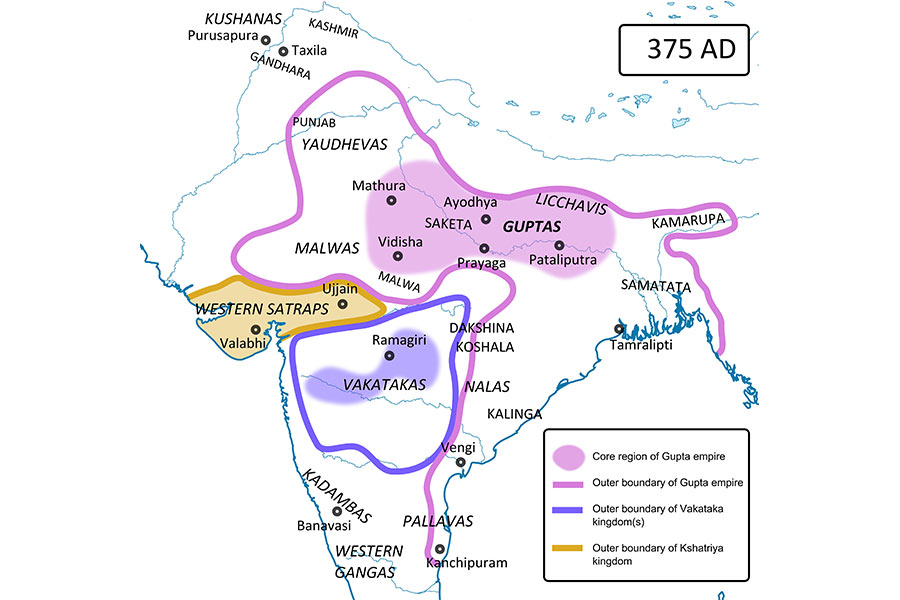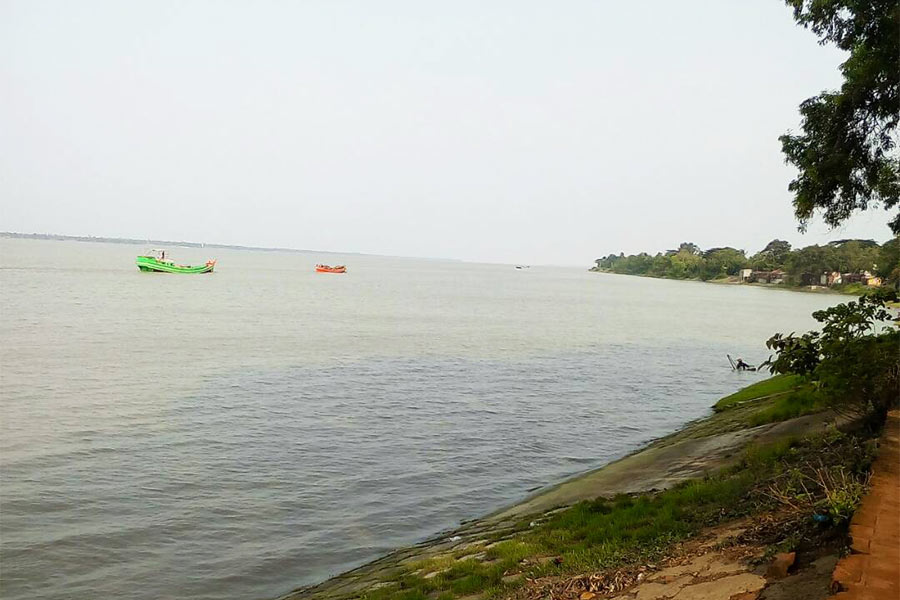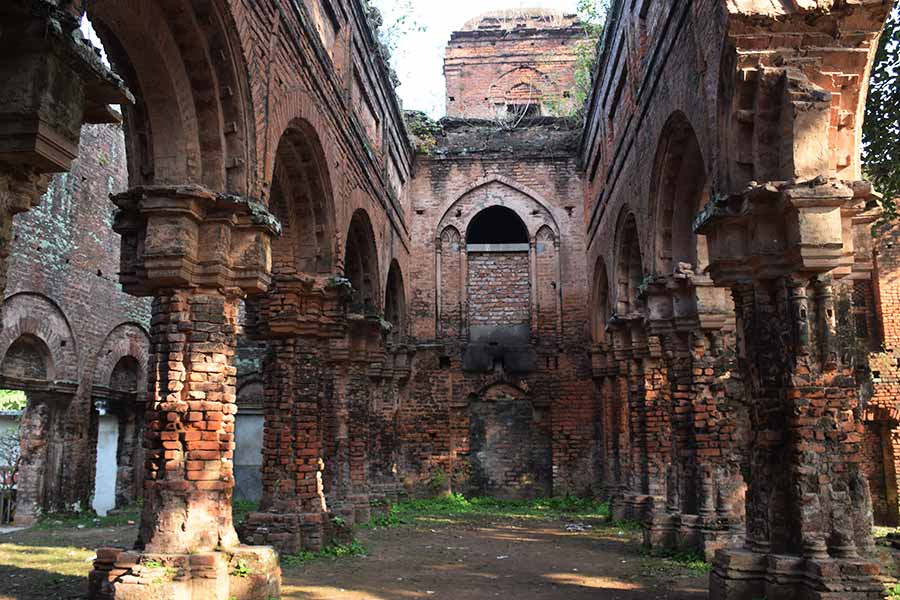At a distance of approximate 85 kilometres in a south-westerly direction from Calcutta, on the banks of the Rupnarayan river, a tributary of the Hooghly, stands the town of Tamluk.
The municipality is the headquarters of the East Midnapore district and is home to close to a million people today. Yet hidden somewhere beneath a typical Indian small town, is an ancient and amazing history that traces back to the days of the Mahabharata. For most scholars and experts agree that what exists as Tamluk today, represents what remains of the ancient, great port city of Tamralipta.
Early Vaishnava texts assign the etymology of the name ‘Tamralipta’ to an interaction between the Sun god and Lord Krishna. Legend says that catching the sight of Lord Krishna in an intimate position with his gopinis, the Sun god was allegedly so embarrassed that his face took a deep copper shade (tamra = Sanskrit word for copper). In the Mahabharata, it is mentioned that the Pandavas’ Ashwamedha horse was stopped by the prince of Tamralipta and a battle ensued although eventually the kingdom allied itself with the Pandavas.

A map showing ancient Tamralipta. Wikimedia Commons
While it is outside the scope of this piece to ascertain the veracity of the above tales, it is a fact that there is scientific evidence to support the ancient antiquity of the region. The nearby mines of Ghatshila have been producing rich copper from more than 2,500 years ago. And archaeological excavation has revealed the presence of a civilisation nearly 2,500 years old. Incidentally, there is also a famous Kali temple called Bargabhima Mandir, which local myths say was built by the Pandava prince, Bhima. In fact, the nearby areas still witness the worship of Bhima and a great fair, known as Bhim Mela (fair of Bhima) happens every year during February/March.
It is said that under the rule of king Tamradhwaja, the kingdom reached its peak. The rich copper mines fuelled the kingdom’s treasury. The ancient Rupnarayan back then most likely flowed straight into the Bay of Bengal through an intricate network of estuaries which enabled large sea-faring ships to dock at Tamralipta (also referred to Tamralipti). The ships carried back copper and also silk and cotton clothes, indigo and earthenware to Ceylon, Southeast Asia and far-east Asia. It is said that one of the principal objectives of Emperor Asoka’s attack on Kalinga was to capture the port city of Tamralipta. During the heyday of the Mauryan rule, a great stone road connected Pataliputra, the Mauryan capital (believed to be today’s Patna) to Tamralipta. This road was built to ensure easy movement of copper and other export items to the port of Tamralipta.

Standing on the banks of the Rupnarayan (in picture), if you were to close your eyes, you may just travel back in time Wikimedia Commons
From Asoka’s time i.e. about 3rd century BCE, Tamralipta reigned supreme as one of the greatest port towns of Asia. But this ancient port town was not just sending out ships loaded in copper. Tamralipta became the gateway for the spread of Buddhism from India to Ceylon, Southeast and Far East Asia. Asoka’s son, Mahendra, and daughter, Sanghamitra, are known to have sailed to Ceylon (Sri Lanka) and Suvarnabhumi (Thailand) from Tamralipta carrying seeds of the Bodhi Briksha (the tree under which Gautama Buddha attained nirvana) and holy Buddhist scriptures. Mahavamsa, the epic of Sri Lanka, records that it took 14 days for the seeds of the holy tree to arrive from Pataliputra to Ceylon of which the sea voyage from Tamralipta took seven days.
The Jataka tales of Buddhism regularly refer to Tamralipta as the port from where voyages went to Southeast Asia carrying Buddhist missionaries. Tamralipta is mentioned in the writings of famous Chinese travellers like Fa-Hien, Hiuen Tsang and Itsing as not only a major port but also one of the most important centres of Buddhist learning. It is believed that the Indian port city of Taluctae mentioned by the Roman philosopher and traveller Pliny (2nd century CE) is the same as Tamralipta. During the rule of the Gupta kings, the importance of Tamralipta grew even more. Ships from the port travelled down the Indian coast and then turning west from Ceylon, sailed onwards to Arabia, Africa and the Mediterranean. Fa-Hien visited Tamralipta in the 5th century CE and wrote that he found 24 monasteries and more than a thousand Buddhist monks in the port city. A 6th century inscription records donations of large tracts of uncultivated lands to the Buddhist guru Shakyabhikshu by the Gupta administrator of the town.

Bargabhima temple Wikimedia Commons
By the end of the 7th century CE though, the great port city started falling into decline. It is not clear what led to this fall from grace. After king Skandagupta’s death in 467 CE, the great Gupta Empire gradually disintegrated and anarchy ruled. With the country torn by strife and war, it is likely that trade suffered. It is also believed that it was around this time that the Rupnarayan started changing course, moving eastwards and finally ending up joining the downstreams of the Bhagirathi (Hooghly). With the older course drying up, the port became less and less navigable and its glory was forever lost. Tamralipta vanished from history.
So great was the erasure that no trace of this great port city remained and it was completely forgotten. It was in the late-19th century that an eminent Bengali scholar by name of Gour Das Bysack carried out excavations in the area and published a report in the journal of the Asiatic Society of Bengal in 1889 which once again brought Tamralipta back into the light. However, the British chief of the Archaeological Survey of India of the day ignored the report and no further work was undertaken until the 1920s. This was followed by further excavations in the 1950s and 1970s. Excavations of 1954-55 dug out Roman amphorae and Greco-Roman gold coins proving the far spreading reach of ancient India.
Today, nothing remains of this ancient great port city except some of the excavated artifacts which are housed in the local museum. But standing on the banks of the Rupnarayan, if you were to close your eyes, you may just travel back in time when ancient Tamralipta shone like a beacon of trade and learning in Asia.


